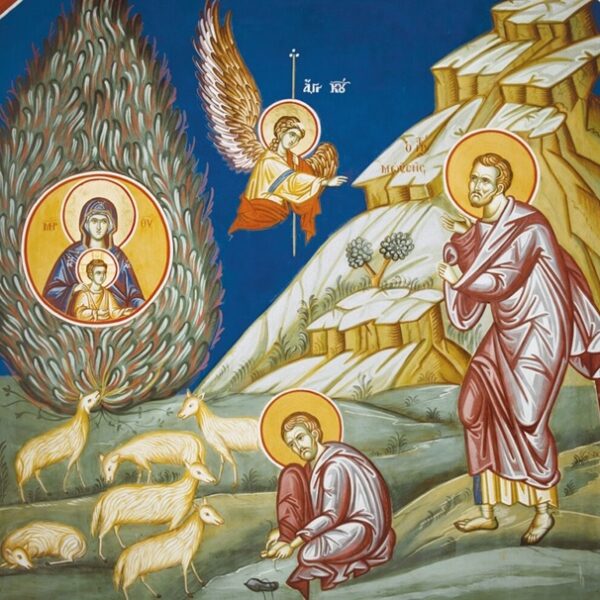The Iambic Katavasies of Christmas, (Odes 1 and 3)
21 December 2021[Iambic: in poetry, a foot consisting of an unstressed syllable, followed by a stressed, e.g. ‘The bird is on the wing’.
Katavasia: hymn sung at the end of an ode of the canon. So called because the singers ‘descended’ from the choir and sang in the middle of the church].
The Iambic Katavasia is difficult to understand*, because it is written in iambic meter and is a poetic text, with all the difficulties such a text, particularly an ecclesiastical one, presents.
The term ‘iambic’ originated in Ancient Greece and reflected the way words were pronounced then. By the time of Byzantium, pronunciation had changed greatly and had become much more like that of today, and this was reflected in the composition of hymns.

In the Byzantine period, we have a line consisting of twelve syllables, which retained the ancient name of iambic trimeter. In general, only the hymns of the Iambic Canons [Christmas, Theophany and Pentecost] are written as poetry, while the hymns of the Prose Canons are written as prose.
Ode 1
Of old the Lord saved the people, transforming the water of the sea into dry land, in wondrous wise. Having been voluntarily born of a Maiden, he has opened an easier path to the pole [i.e. heaven]. We glorify him who is of the same essence as the Father and mortals.
Interpretation
The hymnographer, John the Damascan, uses the Biblical canticle (Exodus 15, 1-19) on which ode 1 of a canon is always based, but in a slightly different way: the crossing of the Red Sea is presented as the Birth of Christ from Our Most Holy Lady. Just as the crossing of the Red Sea occurred in a miraculous way, so, by another miracle, human beings are allowed to cross from earth to heaven. Then it was a man of God, Moses, who performed the miracle, but here God himself effects it. Then it was a matter of the salvation of a people; here the salvation of all the peoples of the earth.
We should also note the following:
- a) the voluntary birth from a pure, spotless virgin
- b) the fact that the road from earth to heaven has now become much easier
- c) the equation of Christ with his heavenly Father and also with us humans. In other words, without ceasing to be God, Christ also became an incarnate human person: equal to God the Father in nature and essence; and equal to us in the nature and essence of human beings. We glorify this incarnate God ‘who performs great and splendid wonders’. And the word ‘glory’ again refers us to a verse in the Biblical ode: ‘for he is glorified’ ( 15, 1).
Ode 3 (1 Kings [Samuel] 2, 1-10).
Benefactor, accept the hymns of your servants, humbling the proud brow of the enemy and, Overseer of all, elevating above sin the hymn-writers, supported unshakeable on the foundation of faith, Blessed One.
Interpretation
The hymnographer turns to the new-born Christ, the Benefactor of the human race, and asks that he make a gesture of mercy to him who is writing the hymn and to the servants of God who sing to him. The hymn-writer asks God to humble the ‘raised’ [= proud] eyebrow of our enemy, who is none other than the devil. And this will happen if the Lord elevates us and preserves us unshakeable on the foundation of faith. This foundation is none other than Christ, the cornerstone on whom we can depend and can build our existence. The reference to the 3rd Biblical canticle, which consists of the prayer of Anna the Prophetess, mother of Samuel, comes through ‘supported unshakeable’, which recalls the ‘my heart is anchored in the Lord’ [verse 1].






